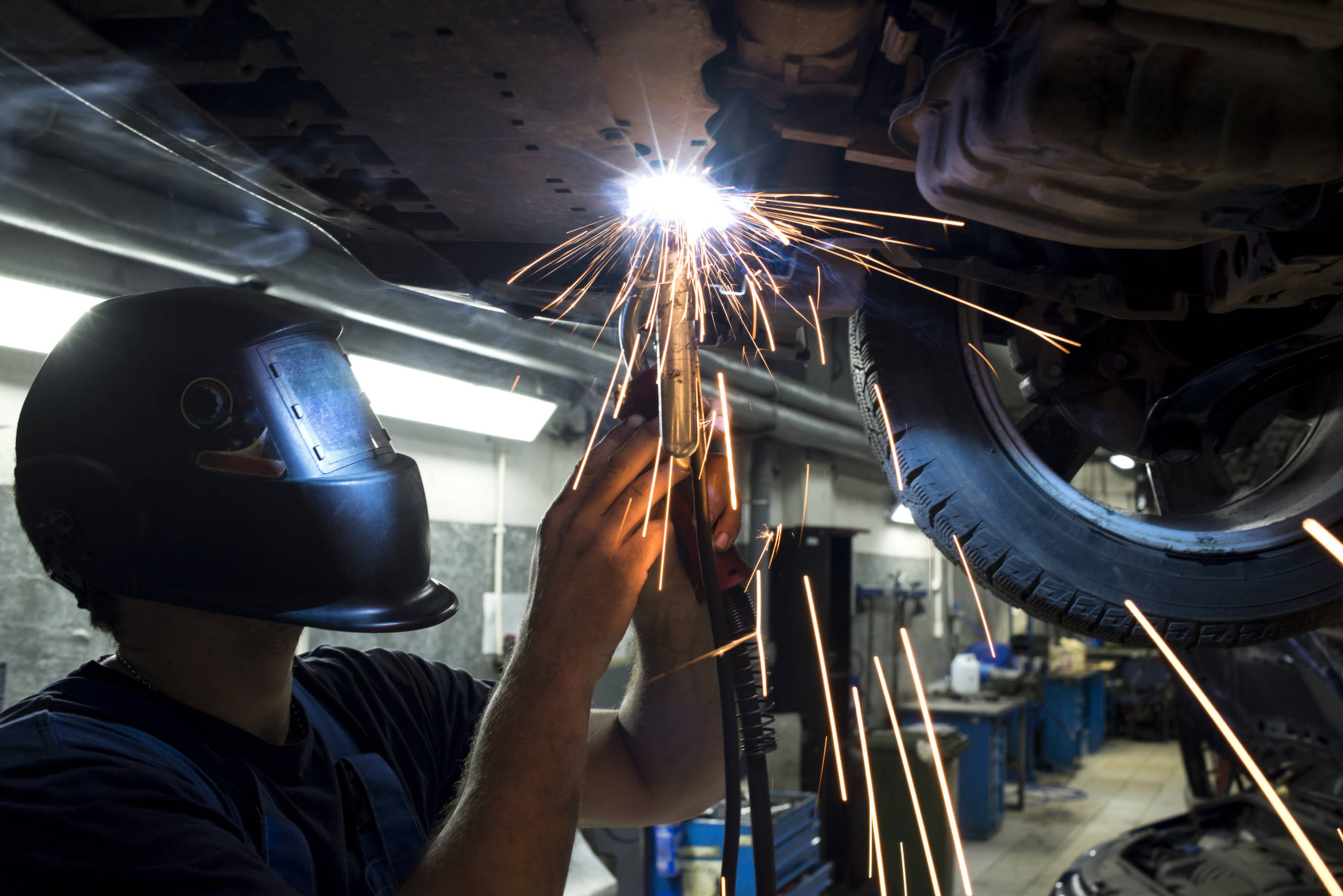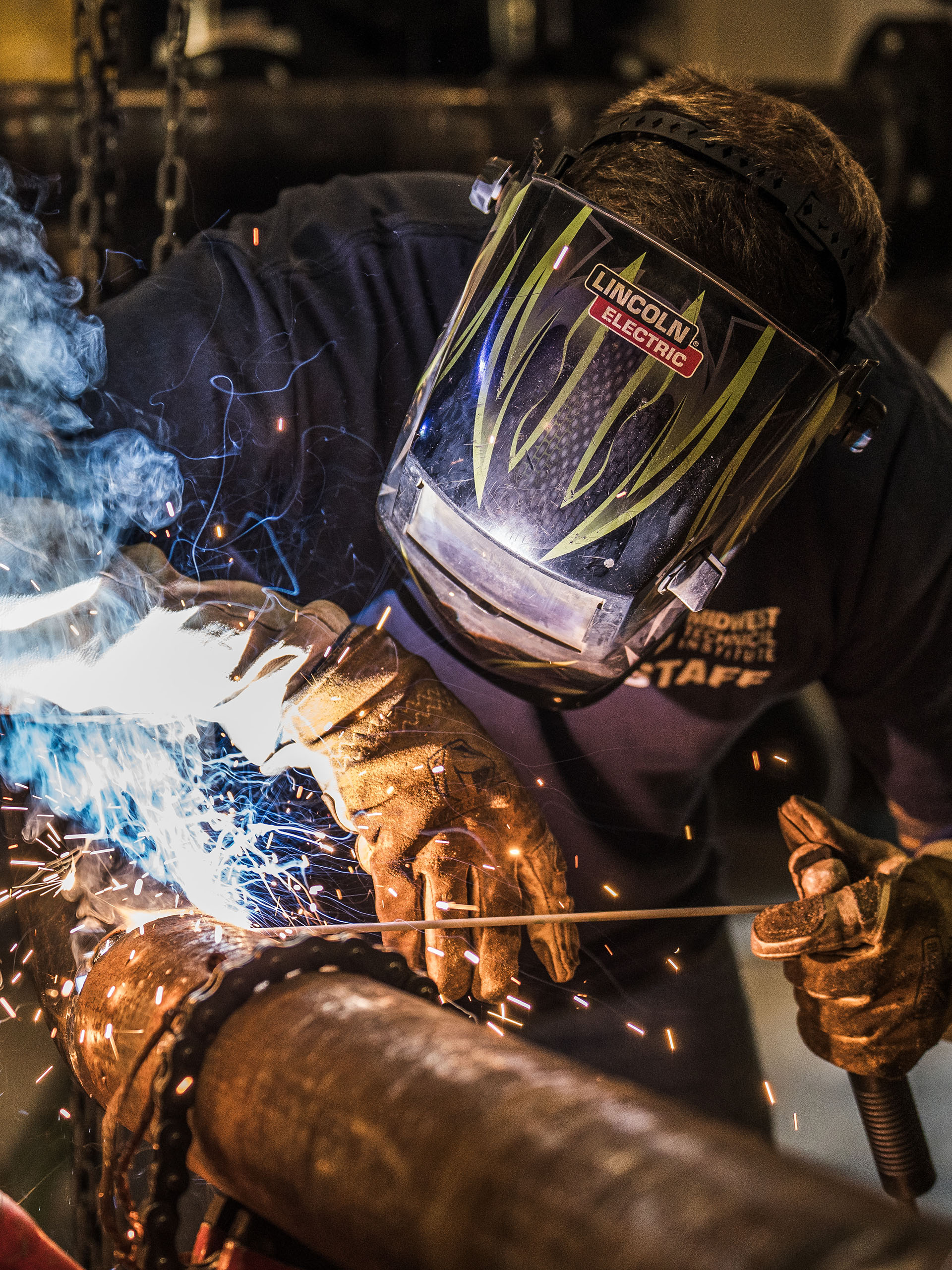Typical Welding Repair Service Issues and Just How to Address Them Efficiently
Welding fixings typically encounter a series of concerns that can endanger the integrity of the final item. Common issues include inadequate infiltration, porosity, and misalignment, to name a few. Each flaw offers one-of-a-kind challenges that call for particular strategies for resolution. Comprehending these concerns is vital for welders intending to improve their outcomes and abilities. This discussion will explore these usual welding repair problems and reliable techniques to address them.
Insufficient Infiltration
Poor penetration occurs when the weld metal fails to totally fuse with the base product, causing weak joints and prospective structural failures. This problem typically comes from insufficient heat input, incorrect electrode angle, or inappropriate welding rate. Welders may encounter inadequate infiltration as a result of a mistake of the necessary parameters for a details product density or type. Furthermore, contamination on the base product's surface area can prevent effective bonding, exacerbating the problem. To attend to inadequate infiltration, welders need to guarantee appropriate settings on their tools and preserve a tidy work surface area. Regular inspection of welds is suggested to identify any type of shortages early, permitting timely adjustments and the prevention of jeopardized architectural honesty in welded assemblies.
Porosity
Porosity is a common flaw in welded joints that manifests as tiny gas bubbles caught within the weld metal. This defect can jeopardize the stability of the weld, causing lowered toughness and potential failure under stress and anxiety. Belgrade Fabrication. Porosity typically emerges from contamination, dampness, or incorrect welding strategies, which allow gases to get away into the liquified weld pool. To address porosity, welders ought to ensure correct surface area preparation, preserve a clean workplace, and utilize suitable welding specifications. Additionally, selecting the best filler material and securing gas can mitigate gas entrapment. Regular inspection and testing of welds can assist identify porosity early, guaranteeing timely corrective actions are taken, thus preserving the high quality and dependability of the bonded structure
Misalignment
Imbalance in welding can emerge from numerous variables, including inappropriate setup and thermal expansion. Recognizing the root creates is crucial for effective resolution. A number of correction techniques are offered to straighten parts and guarantee architectural stability.
Reasons for Misalignment
Welding imbalance commonly stems from a variety of underlying problems that can endanger structural stability. One key reason is improper fit-up of components before welding, which can bring about voids and irregular surfaces. Variations in thermal growth during the welding process can likewise cause distortion, specifically if the materials being signed up with have various coefficients of growth. Additionally, poor fixturing and securing may stop working to hold components securely in location, resulting in movement during welding. Improperly conserved devices, including welding devices and tools, may present variances in the weld bead, additional contributing to misalignment. Ultimately, operator error, coming from inadequate training or experience, can also play a significant duty in creating misaligned welds.
Adjustment Techniques Readily Available
Addressing imbalance successfully requires a mix of corrective methods customized to the certain concerns handy. One common method is using fixtures or jigs to hold elements in the appropriate setting throughout welding, ensuring consistent positioning. Furthermore, pre-heating the materials can assist minimize distortion and enhance fit-up. For considerable misalignment, mechanical adjustment strategies, such as utilizing hydraulic jacks or clamps, can be employed to remedy the position before welding. Post-weld warm therapy might also be required to alleviate stresses triggered by misalignment. Lastly, cautious assessment and adjustment throughout the setup phase can protect against misalignment problems from ending up being substantial issues, advertising a smoother welding procedure and improving total architectural honesty.
Distortion
Distortion is a common difficulty in welding that can occur from different variables, consisting of uneven cooling and heating. Comprehending the reasons of distortion is vital for applying efficient avoidance techniques. Addressing this concern not only enhances architectural honesty but likewise improves the total high quality of the weld.
Reasons for Distortion
When based on the intense heat of welding, products frequently undergo changes that can cause distortion. This phenomenon mostly develops from thermal expansion and contraction throughout the welding process. As the weld location warms up, the product expands; upon cooling, it acquires, which can develop inner stress and anxieties. Furthermore, irregular home heating across a work surface can intensify these tensions, leading to warping or bending. The kind of product additionally plays a significant duty; steels with differing thermal conductivity and coefficients of development may react differently, leading to unpredictable distortions. Additionally, inadequate joint design and poor fixturing can add to misalignment throughout welding, increasing the probability of distortion. Understanding these reasons is crucial for effective welding repair work and avoidance strategies.
Avoidance Techniques
Effective avoidance methods for distortion during welding focus on managing warm input and making sure proper joint style. Maintaining a consistent warmth input helps to lessen thermal growth and contraction, which website link can cause distortion. Using strategies such as pre-heating the workpiece can also reduce the temperature level slope, advertising uniform home heating. In addition, picking proper joint layouts, such as T-joints or lap joints, can enhance security and minimize anxiety concentrations. Carrying out appropriate fixturing to safeguard the workpieces in position further help in preserving positioning throughout the welding process. Staggered welding sequences can disperse heat more equally, avoiding local distortion. By applying these techniques, welders can considerably reduce the chance of distortion and boost the total top quality of their welds.
Fracturing
Cracking is a typical concern encountered in welding repairs, commonly resulting from various factors such as improper cooling prices, material choice, or inadequate joint prep work. The occurrence of splits can significantly jeopardize the honesty of the weld, leading to possible failings throughout procedure. To resolve this issue, welders must initially examine the origin, making sure that products work and suitably picked for the specific application. In addition, regulating the cooling rate during the welding process is vital; rapid cooling can induce stress and anxiety and result in cracking. Correct joint layout and preparation additionally add to lessening the threat. Applying these strategies can boost weld high quality and toughness, eventually lowering the probability of splitting in finished weldments.

Incomplete Combination
A considerable concern in welding repair work is incomplete fusion, which occurs when the weld steel does not adequately bond with the base material or previous weld passes - Belgrade Welding. This issue can result in weak points in the joint, possibly endangering the stability of the welded framework. Factors adding to insufficient blend include insufficient warm input, inappropriate welding strategy, and contamination of the surface areas being joined. To address this issue effectively, welders ought to guarantee proper pre-weld cleansing and surface prep work, along with adjust their welding parameters to attain ample penetration and fusion. Normal assessment during the welding procedure can additionally assist recognize insufficient combination early, permitting for timely rehabilitative steps to enhance the total top quality of the weld
Overheating
While welding fixings can improve structural honesty, overheating presents a substantial obstacle that can result in product deterioration. Excessive heat during welding can change the mechanical properties of steels, causing lowered stamina, raised brittleness, and warping. This sensation is particularly essential in high-stress applications where architectural integrity is paramount. Recognizing getting too hot can entail visual examinations for discoloration or distortion, in addition to keeping an eye on temperature during the welding procedure. To minimize the threats related to overheating, welders need to utilize appropriate techniques, such as managing heat input, readjusting travel rate, and making use of appropriate filler materials. Additionally, executing pre- and post-weld warm treatments can help restore product residential properties and boost the overall her response quality of the fixing, making sure long-lasting efficiency and safety.
Often Asked Questions
What Are the Typical Indications of a Welding Issue?

Exactly How Can I Check My Welds for Top quality?
To test welds for high quality, one can make use of aesthetic examinations, ultrasonic screening, and radiographic approaches. Each method assures important source structural integrity, determines issues, and confirms adherence to specified criteria, inevitably boosting the reliability of the welded joints.
What Safety Precautions Should I Take While Welding?
When welding, one must focus on safety and security by wearing suitable personal protective devices, making sure appropriate air flow, protecting flammable products away, maintaining a tidy work area, and knowing surroundings to stop accidents and injuries.
Can I Repair a Weld Without Redesigning the Entire Joint?
Repairing a weld without remodeling the entire joint is possible, depending on the damages (Montana Mobile Welding and Repair Welding). Strategies such as grinding, including filler product, or using a welding process can effectively deal with details flaws while maintaining the surrounding framework
What Devices Are Crucial for Effective Welding Repairs?
Essential tools for reliable welding repairs include a welding maker, cable brush, grinder, protective gear, clamps, and filler products. Each tool plays an important function in guaranteeing quality and safety throughout the repair service process. Porosity generally emerges from contamination, wetness, or incorrect welding techniques, which permit gases to run away into the molten weld pool. Inadequately maintained equipment, including welding equipments and tools, might introduce variances in the weld grain, further contributing to imbalance. When subjected to the intense heat of welding, products typically undergo modifications that can lead to distortion. Breaking is a typical problem come across in welding repair work, usually resulting from different factors such as incorrect cooling prices, material selection, or insufficient joint prep work. A substantial concern in welding fixings is incomplete blend, which takes place when the weld steel does not appropriately bond with the base material or previous weld passes.